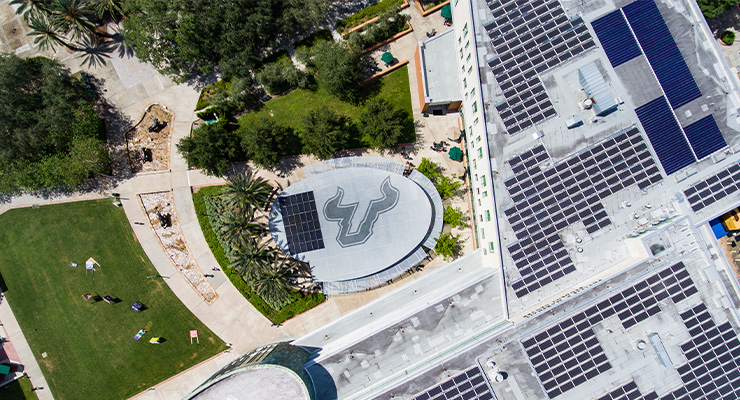How Much Does College Size Matter?
By Alyssa Birchfield | Last Updated: Mar 5, 2025

As a student considering your next steps after graduation, you might be feeling a bit overwhelmed when it comes to which university you want to call home. While there are a number of different factors that can influence your decision, college size is something you might be thinking about. Because the size of the college you choose can have a major impact on your college experience, it’s important to think through your options.
Whether your dream school is a small, medium, or large college, each has its own advantages and disadvantages. As you consider which type of college is best suited for you, let's explore the pros and cons of each school size, and what kinds of students tend to do best at each.
What’s the Size Difference Between Small, Medium, and Large Colleges?
While college size is usually determined by how many students are on campus, it is common for different schools to be smaller or larger based on a few different factors. At the University of South Florida, we have three campuses that encompass each of the college sizes so you find exactly what you're looking for. Let's look at some examples of schools classified as each size.
Small Colleges
Most small colleges have fewer than 2,000 students on campus and are often private, liberal arts schools like Stetson University or California Institute of Technology. There are some exceptions, however, as public universities such as Florida Polytechnic University and UNC Ashville are also considered small. At USF, our Sarasota-Manatee Campus fits into this category.
Medium Colleges
Medium colleges typically have student bodies between 2,000 and 15,000 people. While small schools tend to be private institutions, there is a good balance of private and public colleges in the medium size category. A few notable medium sized schools include colleges like Duke University, University of Alabama – Birmingham, and Northwestern University. The USF St. Petersburg Campus falls into this category.
Large Colleges
Schools with student bodies larger than 15,000 students are considered large colleges. While most large schools are public institutions with a great deal of name recognition, like the University of Michigan, there are also private colleges like Columbia University or University of Pennsylvania that boast a large student body. The USF Tampa Campus features a large campus and student body.

Pros and Cons of Small Colleges
Because of their smaller size, these colleges often have a strong sense of community and camaraderie among their student body. It’s very common for students to develop close relationships with both their peers and professors, which can go a long way in feeling at home at a school.
Additionally, class sizes are usually on the small side, which means students are more likely to receive individualized support from their professors. If you are a student who thrives when you have additional support and tutoring from your teachers, choosing a small school can help you succeed.
A potential drawback of small schools is that they may not offer the same level of resources and funding as larger schools. If you are planning to focus heavily on research during your time in college, it’s important to note that there may not be as many opportunities available as there would be at a larger school. Additionally, small colleges may only offer undergraduate programs, which can be a negative if you are considering an accelerated degree program or pursuing a graduate degree.
Pros and Cons of Medium Colleges
With a larger student body than smaller colleges, medium-sized schools are usually able to provide more resources and opportunities to their students because of an increase in funding.
These schools may have more majors, courses, and extracurricular activities than small schools, which can provide students with a broader range of experiences. Medium-sized colleges are also usually able to blend the resources of a larger school with the personalized support of a smaller school.
Additionally, medium sized schools usually offer a wider range of sports teams, which can be beneficial to student athletes and fans alike. Student athletes at medium sized schools may appreciate both the variety of sports teams available and having less competition to land a spot on the team.
On the downside, many colleges are finding themselves struggling financially, and medium-sized schools
have fewer student resources, events, and athletic programs. Another negative is that like smaller colleges, medium-sized schools may also have a limited range of programs and majors, which can be problematic for students still exploring their academic interests.
Pros and Cons of Large Colleges
While the idea of attending a large college with a student body of more than 15,000 students can be intimidating, it also comes with a bunch of benefits. One of the most significant pros of attending a large college is the wide range of academic programs and extracurricular activities available. Large universities tend to have more resources and facilities than smaller schools, meaning students have access to various courses and clubs.
If you like the idea of attending a large college but also want to take part in a close knit community while on campus, many large schools offer Honors Colleges or programs like USF’s Living Learning Communities to help you connect with peers who share similar academic interests as you.
Despite all the opportunities that large colleges offer, there can also be some challenges. The large class sizes can make it harder for students to get individual attention from professors, and it may be more challenging to build meaningful relationships with classmates. Additionally, navigating a large campus can be overwhelming, especially for students who are not used to living in a big city or crowded environment. Being on a larger campus also means relying on a car to get around campus and dealing with inconveniences like packed parking lots.

Which Students are Best Suited for Each Size College?
Small colleges offer a unique educational experience for students who prefer a more personalized approach to their learning. While small colleges are not for everyone, students who place high value on close relationships with their professors and classmates tend to do well at small schools. Additionally, students who are self-directed learners and enjoy taking on leadership roles tend to excel at small colleges, where opportunities for involvement and engagement are abundant. Ultimately, students who are motivated, engaged, and seek a tight-knit community may find that a small college is the perfect fit for their academic and personal goals.
Medium-sized schools are best suited for students who desire the resources and opportunities of a larger institution while also seeking the personalized support of a smaller school. These students can benefit from the wider range of majors, courses, and extracurricular activities that medium-sized schools offer. Student athletes can also enjoy the variety of sports teams available at medium-sized schools, without having to worry about intense competition for spots on the team.
Students who are self-motivated, independent, and proactive in seeking out resources and opportunities may do well in a large college environment. These students are more likely to take advantage of the various academic programs and extracurricular activities available on campus, which can help you take part in the classic “college experience.” Additionally, students who enjoy meeting new people may find large colleges particularly rewarding, as they can interact with a wide range of students from different backgrounds and cultures. Ultimately, students who are willing to put in the effort to navigate the challenges of a large campus and take advantage of the opportunities available are likely to thrive at a large college.
Choosing the College for You
When it comes to choosing between small, medium, or large schools, there is no one-size-fits-all answer. Each type of school has its own advantages and disadvantages, and the decision ultimately depends on each student's individual needs and preferences. It's vital for students to carefully consider their goals, learning style, and personal preferences before making a decision about school size.
Thinking about whether one of USF's campuses could be the right fit for you? All three USF campuses boast extensive student resources, competitive tuition rates, and a community focused on helping you succeed. Schedule a campus visit or take a virtual tour to experience why students thrive at our university.
As you navigate the decision of which size school is best for you, be sure to download our helpful PDF outlining the pros and cons of each college type.


